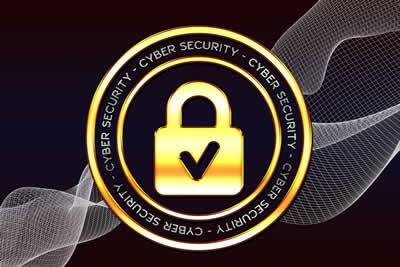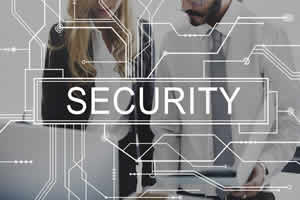How well are you prepared for cyber attacks?
In todays world the importance of educating people on cybersecurity cannot be stressed enough. Cyber threats are constantly evolving and traditional teaching methods in this field are struggling to keep pace. You can probably guess that developing effective learning techniques can help bridge this gap.

This article delves into how we can revolutionize the future of cybersecurity professionals.
Educational Games in Cybersecurity
Games have gained popularity as
tools for skill development, offering an immersive experience. They allow students to navigate through simulated cyber threats, tackle challenges and apply concepts in real-world scenarios.
These games are often designed as simulations that enhance learning by incorporating elements of thinking and collaboration.
Simulated scenarios may involve dealing with attacks, participating in hacking exercises or responding to breaches. Notable examples include platforms like Hack the Box, CyberPatriot and Moonlocks CyberSecuritoons.
And a very useful addition to what's out there is a
cyber security course from Moonlocks CyberSecuritoons, who are leading the way in transforming teaching methods with a cyber security course featuring animated materials. Modern solutions need to offer a dynamic and engaging approach, and the use of cybersecurity cartoons is a further big step in this direction.
Upcoming Trends
We all know that cybersecurity is ever changing. As new technologies emerge, threats also evolve into more complex - and dangerous - forms. So keeping an eye on trends in cybersecurity is crucial.

One significant trend is the growing adoption of artificial intelligence (AI) and machine learning (ML) technologies.
It's well documented that AI driven systems have the ability to quickly analyze huge quantities of data, identifying patterns and anomalies in real time. This enhances their capability to predict and prevent cyber attacks. And the adoption of zero trust security frameworks is also becoming more popular. These frameworks focus on verifying user identities and device security, reducing the risk of unauthorized access whether inside or outside the company's network.
Challenges with Traditional Approaches
Methods of teaching cybersecurity vary, ranging from textbooks and lectures to hands on exercises. While these approaches offer an understanding of cybersecurity principles they often struggle to engage students and prepare them for real world scenarios.
This underscores the need for an interactive educational approach.
The Value of Hands On Education
It's easy to see how educational practices have evolved significantly in most spheres. Teaching systems have shifted from being knowledge providers to
actively involving students in their learning process. This includes tasks, simulations and collaborative activities that replicate real world situations. Such methods enhance understanding, develop problem solving skills and enable the application of knowledge.
Simulation of Real World Scenarios
Interactive platforms can also simulate cybersecurity challenges for students to navigate through cyber threats.
Hands on experience plays a role in enhancing problem solving skills and preparing individuals for the challenges they will encounter in the future.
Traditional education methods often hinder the learning process. Interactive learning tools provide feedback empowering students to correct their mistakes and reinforce their comprehension promptly. This interactive feedback loop facilitates faster concept grasping for everyone.
Tailored Learning
Personalized educational platforms cater to individual preferences. This is particularly beneficial when dealing with topics of varying complexities where a standardized approach may not be effective.

The Role of Animated Education
Animated education engages students through participation. Videos, simulations and graphics effectively communicate ideas in a way that enables better comprehension and simplification of abstract concepts.
Understanding concepts such as encryption, network protocols and malware analysis can be very complex to understand. Animated education offers simplified representations that make these concepts more accessible to learners.
Using Stories for Context
Storytelling through animated scenarios helps students understand the relevance of their studies and illustrates how theoretical knowledge can be applied in real world settings.
Moreover animated content brings scenarios to life providing an immersive experience. Whether depicting a cyber attack or demonstrating the functionality of security tools this dynamic approach adds depth to the learning process.
The Significance of Gamification
By incorporating challenges, simulations and scenarios into animated content through gaming, learners can benefit from experiences that facilitate understanding. These activities also offer valuable insights into cybersecurity practices.
Advanced Virtual Learning Environments
Virtual laboratories offer students experience in a controlled environment. They can be enhanced with animated tutorials. These instructional resources provide step by step guidance, visual aids and explanations to help students navigate through simulations effectively.
Technology Requirements
While the concept of using animation for cybersecurity education shows huge (and obvious) potential, educators must address challenges to ensure success. One crucial aspect is establishing a infrastructure that includes sufficient bandwidth, hardware capabilities and software compatibility. Additionally organizations must allocate resources to support these approaches effectively.

Creating Educational Content
Producing quality content demands expertise in design principles, animation techniques and cybersecurity concepts. Collaboration with industry professionals may be necessary for educators to develop content that meets industry standards.
Ensuring accessibility of animated learning materials for all students - including those with disabilities or limited access to technology - is crucial. It's essential to craft content while considering accessibility to establish an optimal learning environment.
In Conclusion
The realm of cybersecurity is in a permanent state of flux with fresh threats and technologies surfacing all the time. Consequently educational resources must be consistently updated to mirror advancements in the field. Therefore every company should have a strategy in place to ensure that their materials remain current and pertinent.
Similarly the methodologies employed for user education should progress well. This indicates that the future of cybersecurity education hinges on blending learning with a captivating teaching approach.
By comprehending and applying the points made here you'll be well equipped to fend off attacks and maintain smooth operations for your business, well into the future.




























